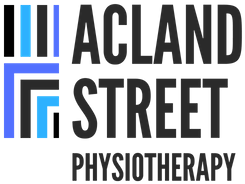|
When embarking on a resistance training journey, one of the most common dilemmas faced by beginners and seasoned gym-goers alike is choosing between multi-joint (MJ) and single-joint (SJ) exercises. Both types of exercises offer unique benefits and can be pivotal in shaping your fitness regimen. Recent studies shed light on their effects, helping you make an informed decision tailored to your goals.
Understanding the Basics Multi-Joint Exercises involve two or more sets of joints and muscle groups. Classic examples include squats, bench presses, and deadlifts. These exercises are lauded for their efficiency in working multiple muscles simultaneously, potentially offering greater functional benefits. Single-Joint Exercises focus on isolating one joint and primarily targeting a single muscle group, like bicep curls or leg extensions. They are often recommended for targeted muscle development and rehabilitation purposes. The Research SpeaksTwo significant studies provide insight into the ongoing debate between MJ and SJ exercises. Gentil et al. (2015) found that both MJ and SJ exercises produced similar increases in muscle size and strength in untrained men, suggesting that neither type is superior for beginners aiming to increase muscle mass and strength[1]. On the other hand, Paoli et al. (2017) demonstrated that when the total work volume was equated, MJ exercises led to greater improvements in VO2max and muscle strength than SJ exercises[2]. This suggests that MJ exercises might offer added benefits for improving cardiovascular fitness and functional strength. Making the Choice: What's Best for You? The selection between MJ and SJ exercises should align with your fitness goals, practical considerations, and personal preferences:
Both MJ and SJ exercises have their place in a well-rounded fitness regimen. Understanding your personal goals, whether it's muscle gain, fat loss, strength, rehabilitation, or general fitness, is key to determining the right balance between the two. Consultation with fitness and health professionals can provide personalized advice and training programs, ensuring you get the most out of your workouts while minimizing the risk of injury. Remember, the best exercise program is one that is sustainable, enjoyable, and tailored to your individual needs and goals. So, whether you're lifting heavy with the squats or focusing on that bicep peak with curls, you're on the right track to achieving your fitness aspirations. References
0 Comments
Leave a Reply. |
Author
Archives
May 2024
|
Copyright Acland Street Physiotherapy © 2024

 RSS Feed
RSS Feed